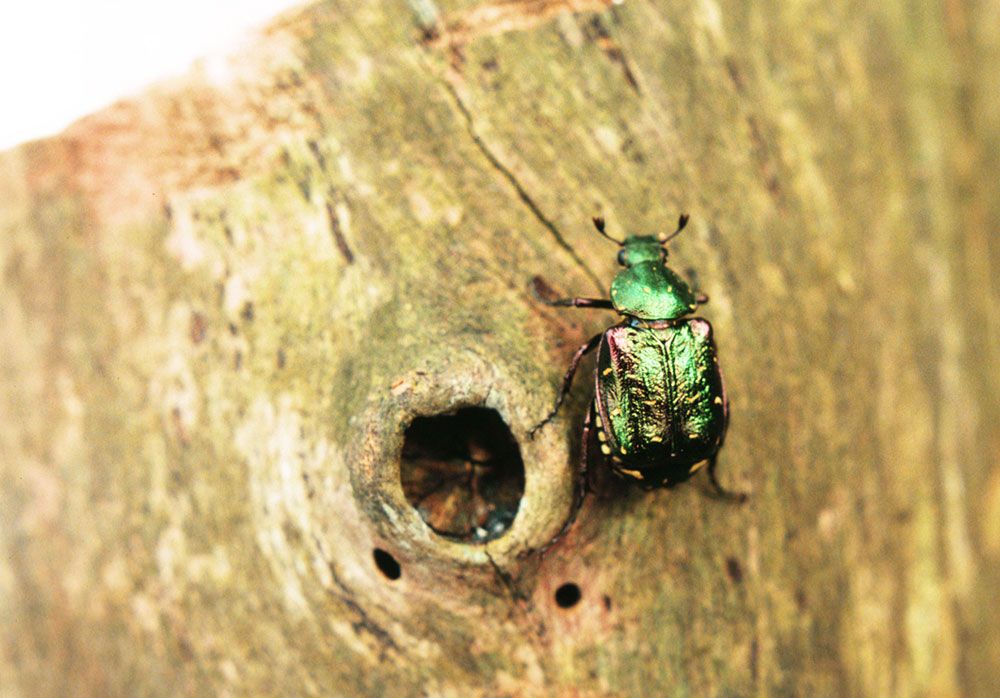Seen a noble chafer beetle?

Report a sighting
If you have seen a noble chafer beetle or their droppings (frass) or young grubs (larvae), we would love to know as many details as possible. Photos of adult beetles or larvae can be emailed to laura.bower@ptes.org. Small samples of frass (droppings) can be posted in to us for identification. Please accompany sightings with a six-figure OS grid reference (eg SO364101) or nearest postcode and clear description of the site in order for us to find the location.
We are especially interested in noble chafers in the New Forest area
If you are not sure if your sighting was a noble chafer take a look at our facts page.
How to look for noble chafers
Noble chafers are very rarely seen but you can search for their droppings. Where old fruit trees in an orchard exhibit decay features, you can survey for noble chafer signs:
- With your arm, a long handled spoon or similar implement, reach into any accessible hollows.o
- Collect a handful of the wood mould that is inside. This will be fine, woody material produced by fungal activity during the decay process.
- Inspect the wood mould for noble chafer frass. It may be useful to use a white sheet or piece of paper for this as when shaken the pellets usually come to the surface. Noble chafer frass is approximately 3mm long and lozenge-shaped .
- If noble chafer frass is discovered please take a small sample and send it to the PTES office, with address and grid reference for confirmation and recording.
- If noble chafer larvae or adults are discovered please leave them where they are but take a photograph if possible. Return the wood mould to the hollow.
- Always be aware that other species inhabit tree hollows so please explore with care and keep disturbance to a minimum.
You can also help by locating their precious homes by taking part in our Traditional Orchard Survey.
Removing an orchard?
If you plan to remove an orchard that may have noble chafer within it, please get in touch with laura.bower@ptes.org so we can do a survey and potentially harvest specimens for research.
